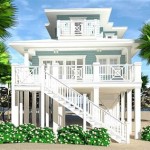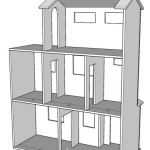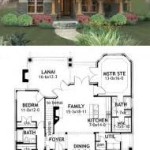Builder house plans are pre-designed blueprints for residential homes, typically created by architects or home builders. These plans provide detailed instructions on the layout, materials, and construction methods required to build a house, and they serve as the foundation for obtaining building permits and constructing the actual structure.
Builder house plans offer several benefits to homeowners. They can save time and money compared to custom home designs, as they have already been vetted for efficiency and cost-effectiveness. They also provide a wide range of options to choose from, catering to different tastes and budgets. Whether you’re a first-time homebuyer or an experienced builder, builder house plans can streamline the design and construction process.
In this article, we will explore the various types of builder house plans available, their key features, and the factors to consider when selecting a plan that meets your specific needs. We will also discuss the advantages and potential drawbacks of using builder house plans, equipping you with the knowledge to make an informed decision for your next home project.
When selecting builder house plans, there are several key points to consider:
- Budget: Determine your budget and stick to it.
- Lot size and shape: Choose plans that fit your lot’s dimensions and topography.
- Number of bedrooms and bathrooms: Consider your current and future needs.
- Layout and flow: Ensure the plan meets your lifestyle and preferences.
- Architectural style: Select a style that aligns with your aesthetic taste.
- Energy efficiency: Look for plans that incorporate energy-saving features.
- Customization options: Determine if the plan allows for modifications to suit your needs.
- Builder reputation: Research the builder’s experience and track record.
- Local building codes: Ensure the plan complies with local regulations.
- Resale value: Consider the plan’s potential impact on your home’s resale value.
By carefully considering these factors, you can select builder house plans that meet your specific requirements and create the home of your dreams.
Budget: Determine your budget and stick to it.
Determining your budget is crucial before selecting builder house plans. This will help you narrow down your options and avoid overspending. Consider the following factors when setting your budget:
Land costs: If you don’t already own land, factor in the cost of purchasing a lot. This can vary significantly depending on the location and size of the property.
Construction costs: These include materials, labor, and permits. The cost per square foot will vary depending on the complexity of the design, materials used, and local labor rates.
Contingency fund: Allocate a contingency fund of at least 10% of your budget for unexpected expenses that may arise during construction.
Once you have determined your budget, stick to it as closely as possible. This may require making compromises on the size, style, or features of your home. However, it is important to avoid overextending yourself financially, as this can lead to stress and potential financial hardship down the road.
Consider working with a financial advisor or mortgage lender to determine how much you can afford to borrow and to secure financing for your project. They can also provide guidance on managing your budget and making informed financial decisions throughout the construction process.
Lot size and shape: Choose plans that fit your lot’s dimensions and topography.
The size and shape of your lot will play a significant role in determining which builder house plans are suitable for your project. It is important to choose plans that fit the dimensions and topography of your lot to ensure a harmonious and functional home.
Lot dimensions: Consider the length, width, and depth of your lot when selecting plans. The overall footprint of the house should fit comfortably within the lot boundaries, with adequate space for setbacks, driveways, patios, and landscaping. Narrow lots may require narrower house plans, while wider lots offer more flexibility in design.
Lot topography: The slope and elevation of your lot can also affect your choice of plans. Sloping lots may require homes with split-level or walk-out basements to accommodate the terrain. Lots with steep slopes may necessitate retaining walls or other structural features to ensure stability.
Setbacks and easements: Local building codes typically specify minimum setbacks from property lines, streets, and other structures. These setbacks must be taken into account when selecting plans to ensure compliance with regulations and to avoid potential conflicts with neighbors or utility companies.
Working with an experienced builder or architect can help you assess your lot’s characteristics and choose plans that optimize the use of space, complement the surrounding environment, and meet your specific needs.
Number of bedrooms and bathrooms: Consider your current and future needs.
The number of bedrooms and bathrooms in your home is a crucial decision that will impact your daily life and the overall functionality of your space. It is important to carefully consider your current and future needs when selecting builder house plans to ensure you create a home that meets your lifestyle and provides ample space for growth.
- Current needs: Determine the number of bedrooms and bathrooms you require for your household. Consider the number of family members, guests, and potential overnight stays.
- Future needs: Think ahead to your future plans and needs. If you are planning to expand your family or have elderly parents who may need to move in, consider adding an extra bedroom or bathroom.
- Resale value: The number of bedrooms and bathrooms can impact your home’s resale value. Homes with more bedrooms and bathrooms tend to be more desirable and command higher prices.
- Space and privacy: Consider the amount of space you need and the level of privacy you desire. If you value privacy, you may opt for a plan with a master suite separate from the other bedrooms.
Remember that adding bedrooms and bathrooms can increase the construction costs and overall size of your home. It is important to strike a balance between your needs, budget, and the size of your lot. By carefully considering these factors, you can select builder house plans that create a comfortable and functional home that meets your current and future requirements.
Layout and flow: Ensure the plan meets your lifestyle and preferences.
The layout and flow of your home have a significant impact on your daily life and overall enjoyment of your space. When selecting builder house plans, it is important to carefully consider how the different rooms are arranged and connected to ensure that the plan meets your lifestyle and preferences.
Consider your daily routine: Think about how you and your family use your home on a daily basis. Do you need a separate dining room for formal occasions or a more casual eat-in kitchen? Do you prefer an open floor plan that allows for easy flow between living spaces or more defined rooms for privacy? Understanding your daily routines and preferences will help you choose a plan that supports your lifestyle.
Traffic flow: Pay attention to the traffic flow within the home. You want to avoid creating bottlenecks or awkward transitions between rooms. The kitchen should be easily accessible from the dining area and living room, and the bedrooms should be conveniently located near the bathrooms. Smooth traffic flow will make your home more comfortable and functional.
Privacy and separation: Consider the level of privacy and separation you desire between different areas of your home. If you value privacy, you may opt for a plan with a separate master suite located away from the other bedrooms. You may also want to consider the placement of bathrooms and common areas to ensure that they offer the desired level of privacy for your family.
By carefully considering the layout and flow of your home, you can select builder house plans that create a space that is tailored to your specific needs and preferences. A well-designed layout will enhance your daily life and make your home a more enjoyable and comfortable place to live.
Architectural style: Select a style that aligns with your aesthetic taste.
The architectural style of your home is an important consideration that will shape the overall look and feel of your property. When selecting builder house plans, it is important to choose a style that aligns with your aesthetic taste and complements the surrounding environment.
- Traditional style: Traditional homes are characterized by their symmetrical facades, pitched roofs, and classical details. They often feature columns, moldings, and other decorative elements that evoke a sense of timeless elegance.
- Modern style: Modern homes are known for their clean lines, open floor plans, and use of natural materials such as wood, glass, and steel. They often feature large windows that blur the boundaries between indoor and outdoor spaces.
- Craftsman style: Craftsman homes are inspired by the Arts and Crafts movement of the early 20th century. They typically have low-pitched roofs, exposed beams, and natural materials such as wood and stone. Craftsman homes often feature built-in cabinetry and other functional details.
- Mediterranean style: Mediterranean homes are reminiscent of the architecture found in countries bordering the Mediterranean Sea. They often feature stucco exteriors, tile roofs, and arched windows and doorways. Mediterranean homes are known for their warm and inviting atmosphere.
These are just a few of the many architectural styles available. When selecting a style, consider your personal preferences, the surrounding neighborhood, and the climate in your area. By choosing a style that you love and that complements its surroundings, you can create a home that is both beautiful and timeless.
Energy efficiency: Look for plans that incorporate energy-saving features.
In today’s environmentally conscious world, energy efficiency is a major consideration when building a new home. Builder house plans that incorporate energy-saving features can significantly reduce your energy consumption and lower your utility bills over the long term.
There are several key energy-saving features to look for when selecting builder house plans:
- Insulation: Proper insulation is crucial for maintaining a comfortableand reducing heat loss in the winter and heat gain in the summer. Look for plans that specify high-quality insulation in the walls, roof, and foundation.
- Windows and doors: Energy-efficient windows and doors are designed to minimize heat transfer and air leakage. Look for plans that include ENERGY STAR-rated windows and doors, which meet strict energy performance guidelines.
- Appliances: Energy-efficient appliances, such as refrigerators, dishwashers, and washing machines, can significantly reduce your energy consumption. Look for plans that include ENERGY STAR-rated appliances or provide the option to upgrade to energy-efficient models.
- Lighting: LED lighting is the most energy-efficient lighting technology available. Look for plans that incorporate LED lighting throughout the home, including recessed lighting, under-cabinet lighting, and outdoor lighting.
- Solar panels: Solar panels can generate electricity from sunlight, reducing your reliance on the grid and further lowering your energy costs. Look for plans that include solar panels or provide the option to add them in the future.
By incorporating these energy-saving features into your builder house plans, you can create a home that is not only comfortable and stylish but also environmentally friendly and cost-effective to operate.
In addition to the features listed above, consider the following tips for improving the energy efficiency of your home:
- Passive solar design: Orient your home to take advantage of natural sunlight for heating and lighting.
- Landscaping: Plant trees and shrubs around your home to provide shade and reduce heat gain.
- Sealing and weatherstripping: Seal any gaps or cracks around windows, doors, and pipes to prevent air leakage.
By following these tips, you can create a builder house plan that meets your specific needs and helps you build an energy-efficient home that is comfortable, affordable, and sustainable.
Remember that energy-efficient features may add to the initial cost of construction, but they can significantly reduce your energy consumption and save you money on utility bills over the long term. By investing in energy efficiency, you can create a home that is not only comfortable and stylish but also environmentally friendly and cost-effective to operate.
Customization options: Determine if the plan allows for modifications to suit your needs.
Builder house plans typically come with a set of standard features and specifications. However, you may want to make modifications to the plan to better suit your specific needs and preferences. It is important to determine if the plan you are considering allows for customization and to what extent.
- Minor modifications: Most builder house plans allow for minor modifications, such as changing the placement of windows or doors, adding or removing a closet, or adjusting the size of a room. These modifications can usually be made without significantly altering the structural integrity or overall design of the plan.
- Major modifications: Major modifications, such as changing the overall footprint of the house, adding a second story, or reconfiguring the layout, may be more difficult or impossible to make. These modifications may require significant changes to the structural design and engineering of the plan, which can add to the cost and complexity of the project.
- Custom design: If you have very specific needs or preferences that cannot be met by a standard builder house plan, you may want to consider working with an architect to create a custom design. Custom designs allow for complete flexibility in the design and layout of your home, but they also come with a higher price tag.
- Pre-designed variations: Some builders offer pre-designed variations of their standard plans, which may include different exterior elevations, room layouts, or optional features. These variations can provide some flexibility without the need for major modifications or custom design.
When selecting a builder house plan, carefully consider your customization needs and budget. If you anticipate needing significant modifications, it is important to choose a plan that allows for flexibility and work with a builder who is experienced in making custom changes. By understanding the customization options available, you can select a plan that meets your specific requirements and create a home that is tailored to your unique lifestyle.
Builder reputation: Research the builder’s experience and track record.
Before selecting a builder house plan, it is crucial to research the reputation and track record of the builder. This will help you assess their experience, quality of work, and ability to deliver on their promises.
- Experience: Look for builders with a proven track record of successfully completing similar projects. Consider the number of years they have been in business and the types of homes they have built.
- Quality of work: Examine the builder’s portfolio and read reviews from past clients to get a sense of the quality of their work. Pay attention to details such as craftsmanship, attention to finish, and overall customer satisfaction.
- Financial stability: Ensure that the builder is financially stable and has a good reputation for meeting contractual obligations. Check for any history of financial problems or legal disputes.
- Communication and customer service: Assess the builder’s communication skills and responsiveness to inquiries. Consider how they handle questions, address concerns, and keep clients informed throughout the building process.
By thoroughly researching the builder’s reputation, you can increase your chances of selecting a reliable and trustworthy professional who will deliver a high-quality home that meets your expectations.
Local building codes: Ensure the plan complies with local regulations.
Local building codes are a set of regulations established by municipalities to ensure the safety and quality of buildings within their jurisdiction. These codes cover various aspects of construction, including structural integrity, fire safety, energy efficiency, and accessibility. When selecting builder house plans, it is essential to ensure that the plan complies with local building codes to avoid costly delays and potential legal issues during the construction process.
- Permits and inspections: Building permits are required before any construction work can begin. The local building department will review the plans to ensure compliance with building codes and issue a permit if approved. Regular inspections are also conducted throughout the construction process to verify that the work is being done according to the approved plans and meets code requirements.
- Structural safety: Building codes specify minimum standards for structural elements such as foundations, framing, and roofing to ensure the stability and safety of the structure. Plans must demonstrate that the house can withstand the anticipated loads and forces, including wind, snow, and earthquakes.
- Fire safety: Building codes include provisions to minimize the risk of fire and protect occupants in the event of a fire. These provisions may include requirements for fire-resistant materials, smoke detectors, and emergency egress routes.
- Energy efficiency: Many local building codes have adopted energy efficiency standards to reduce energy consumption and promote sustainability. These standards may specify requirements for insulation, windows, and appliances to ensure that the home meets minimum energy performance levels.
Failure to comply with local building codes can result in delays, stop-work orders, fines, or even the condemnation of the building. By selecting plans that meet local building codes, you can ensure a smooth and successful construction process and avoid potential legal and financial risks.
Resale value: Consider the plan’s potential impact on your home’s resale value.
When selecting builder house plans, it is important to consider the potential impact of the plan on your home’s resale value. A well-designed and well-built home is more likely to attract buyers and command a higher price when it comes time to sell. Here are some key factors to keep in mind:
- Location: The location of your home is a major factor that affects its resale value. Homes in desirable neighborhoods with good schools, amenities, and access to transportation tend to have higher resale values than homes in less desirable locations.
- Size and layout: The size and layout of your home can also impact its resale value. Larger homes with more bedrooms and bathrooms tend to sell for more than smaller homes. However, it is important to choose a size and layout that meets your needs and budget, as overbuilding can also be a detriment to resale value.
- Style: The architectural style of your home can affect its resale value, depending on the preferences of buyers in your area. Classic and traditional styles tend to have broader appeal and higher resale values than more unique or trendy styles.
- Condition: The condition of your home is another important factor that affects its resale value. Homes that are well-maintained and updated tend to sell for more than homes that are in need of repairs or renovations.
By carefully considering the resale value of your home when selecting builder house plans, you can make an informed decision that will help you maximize your investment in the long run.







Related Posts








